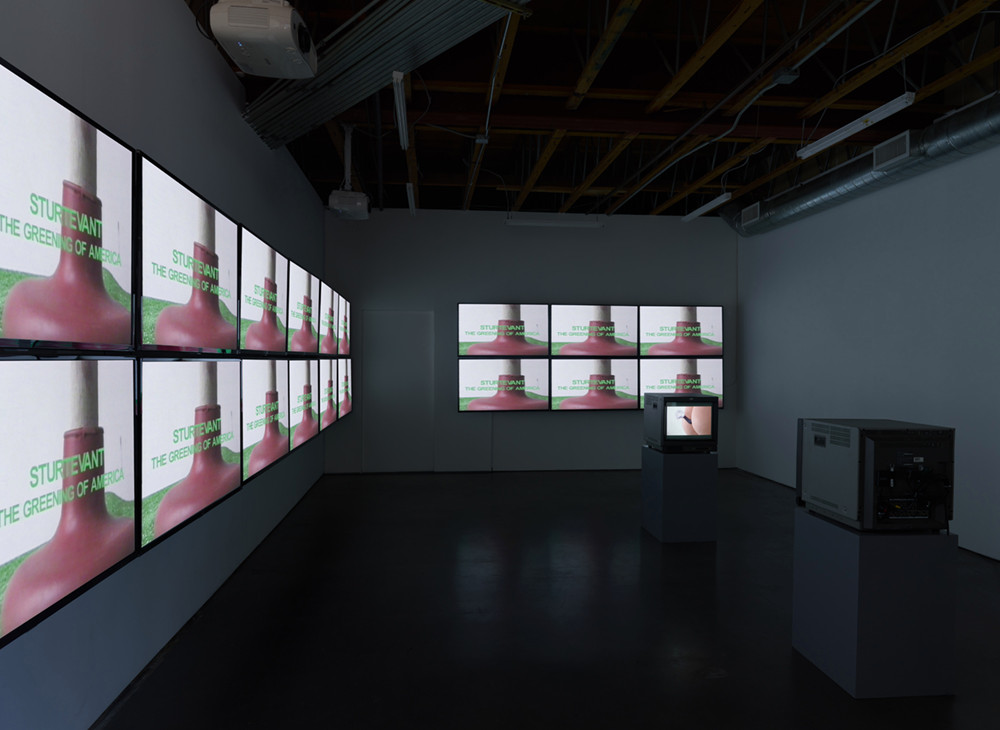[ad_1]
Sturtevant didn’t copy, appropriate, or forge; Sturtevant repeated. The artist, who died in 2014, at age eighty-nine, is best known for paintings and sculptures that redo the signature works of other artists, ranging from Marcel Duchamp to Felix Gonzalez-Torres. When she took up video in the new millennium, Sturtevant often repeated the juicy burgers and waving flags of commercial television instead. Freedman Fitzpatrick’s recent exhibition of her rarely seen videos framed the works anachronistically as “memes”—a term whose association with digital imagery had barely begun at the time she made most of the videos. The designation makes a certain sense, insofar as it highlights the videos’ short length, deceptive simplicity, monotony, and wit. But these works resist the most crucial quality of memes: virality.
The show was arranged as a face-off. Projected on one wall was The Dark Threat of Absence (2002), a fifteen-minute, two-channel video reprising Paul McCarthy’s video Painter (1995), which mocks the pretensions of Abstract Expressionism. Like McCarthy, Sturtevant struggles with condiments and paint while wearing a wig, smock, and rubber hands. But her version adds repetitions not present in the original, in the form of her grunting as she finger-fucks a jar of red paint or muttering “sex and death, sex and death, sex and death.” The opposite wall and part of a third were gridded with eighteen synchronized monitors playing a sequence of two dozen shorter videos (between forty seconds and five minutes long) assembled from ads and stock footage. When the McCarthy video played, the shorts did not, and vice versa; the gallery was always only half-activated, creating an atmosphere of suspense.
Two thirty-second videos continuously playing on box monitors facing each other on plinths cut some of the tension. Both videos starred a paper hand waving from the cleft of a plastic butt. In one, a tiny voice says, “Hello!” (HELLO, 2006); in the other, “Hey, assholes!” (HEY, 2006). The exhibition ultimately asked whether Sturtevant’s mediation of the canon permits future variations, too—whether her repetitions can be repeated by others. This pair of screens provided the answer. Sturtevant waved hello to Sturtevant: her work is a closed loop.
Instead of meme-hood, what emerged from the collection of videos was Sturtevant’s critique of value. The shorter works picked out and repeated ad absurdum the ways in which commercial culture tells us what matters. One particularly mind-melting short, Shifting Mental Structures Millionaire / Money (2000), features a montage of several crane shots over the sets of the game show “Who Wants to Be a Millionaire,” followed by a clip, repeated twenty-eight times, of a businessman fanning out stacks of cash as he declares, “Real live money.” Sturtevant’s videos shun the Darwinian-capitalist impulse of click-seeking memes. As she reused materials, she also rebranded them in a way that took them out of normal circulation. Many of these works come with a disclaimer from the artist in the credits: NOT FOR SALE. This is more a statement of principle than of fact. You can buy her art (including editions of these videos), but her art isn’t selling anything.
[ad_2]
Source link


